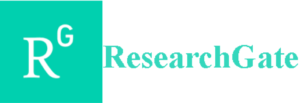Innovative learning processes and social software for developing creativity and innovation in higher education
Keywords:
Higher education, social software, personal learning environment, collaboration, social networking, self-organisation, iCampAbstract
In this article we describe innovative learning processes for higher education and the concept of a learning environment based on social software and learner’s personal learning environments. Presented work is a result of the iCamp (Innovative, inclusive, interactive & intercultural learning campus) project from the 6. Framework Programme of European Union, where Jožef Stefan Institute was one of the project partners. iCamp’s vision was to support competence development in self-directing intentional learning projects, multicultural collaborating and social networking. With regards to the technological level the competence development was supported by loosely coupled social software-based educational tools. Contrary to monolithic learning management systems learners were able to assemble their personal learning environments that best suited their learning needs. Different learning activities are presented in the article together with social software, e.g. blog, wiki, social bookmarking tools, etc., that supports each activity. Learning environment and pedagogical processes were validated in three field trials in higher education. Validation results in the form of good practise contribute to creativity and innovation in higher education.
References
Nguyen-Ngoc, A. V. in Law, E. (ur.). 2009. Third Trial evaluation Report. iCamp deliverable D4.4.
Duffy, P., Bruns, A. 2006. The use of blogs, wikis and RSS in education: A conversation of possibilities. V: Zbornik konference Online Learning and Teaching Conference 2006, Brisbane: September 26.
Evropski parlament in svet. 2006. Priporočilo Evropskega parlamenta in sveta z dne 18. decembra 2006 o ključnih kompetencah za vseživljenjsko učenje (2006/962/ES).
Fiedler, S., Kieslinger, B., Pata, K. in Ehms, K. 2009. iCamp Educational Intervention Model. iCamp deliverable D1.3.
Golder, S. in Huberman, B. 2005. The Structure of Collaborative Tagging Systems, The Computing Research Repository, dostopno na http://arxiv.org/abs/cs/0508082.
Grodecka, K., Wild, F. in Kieslinger, B. (ur.). 2008. How to Use Social Software in Higher Education, Wydawnictwo Naukowe Akapit, Kraków, ISBN 978-83-60958-28-5.
Komisija Evropskih skupnosti. 2008. Predlog odločbe Evropskega parlamenta in sveta o evropskem letu ustvarjalnosti in inovacij (2009), COM(2008) 159.
Richardson, W. 2006. Blogs, wikis, podcasts, and other powerful web tools for classrooms. Thousand Oaks, CA: Corwin Press.
Schaffert, S. in Hilzensauer, W. 2008. On the way towards Personal Learning Environments: Seven crucial aspects. eLearning Papers, Nº 9, www.elearningpapers.eu, ISSN 1887-1542.
Downloads
Published
Issue
Section
License
The authors retain rights under the Creative Commons Attribution-ShareAlike 4.0 International CC BY-SA 4.0. Authors assign copyright or license the publication rights in their articles, including abstracts, to MIP=JIBM. This enables us to ensure full copyright protection and to disseminate the article, and of course MIP=JIBM, to the widest possible readership in electronic format. Authors are themselves responsible for obtaining permission to reproduce copyright material from other sources.














